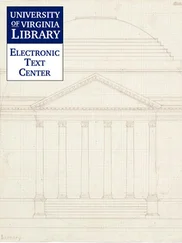Vince Houghton - Nuking the Moon - And Other Intelligence Schemes and Military Plots Left on the Drawing Board
Здесь есть возможность читать онлайн «Vince Houghton - Nuking the Moon - And Other Intelligence Schemes and Military Plots Left on the Drawing Board» весь текст электронной книги совершенно бесплатно (целиком полную версию без сокращений). В некоторых случаях можно слушать аудио, скачать через торрент в формате fb2 и присутствует краткое содержание. Город: New York, Год выпуска: 2019, ISBN: 2019, Издательство: Penguin Books, Жанр: История, Юмористические книги, на английском языке. Описание произведения, (предисловие) а так же отзывы посетителей доступны на портале библиотеки ЛибКат.
- Название:Nuking the Moon: And Other Intelligence Schemes and Military Plots Left on the Drawing Board
- Автор:
- Издательство:Penguin Books
- Жанр:
- Год:2019
- Город:New York
- ISBN:978-0-5255-0517-4
- Рейтинг книги:4 / 5. Голосов: 1
-
Избранное:Добавить в избранное
- Отзывы:
-
Ваша оценка:
- 80
- 1
- 2
- 3
- 4
- 5
Nuking the Moon: And Other Intelligence Schemes and Military Plots Left on the Drawing Board: краткое содержание, описание и аннотация
Предлагаем к чтению аннотацию, описание, краткое содержание или предисловие (зависит от того, что написал сам автор книги «Nuking the Moon: And Other Intelligence Schemes and Military Plots Left on the Drawing Board»). Если вы не нашли необходимую информацию о книге — напишите в комментариях, мы постараемся отыскать её.
Nuking the Moon: And Other Intelligence Schemes and Military Plots Left on the Drawing Board — читать онлайн бесплатно полную книгу (весь текст) целиком
Ниже представлен текст книги, разбитый по страницам. Система сохранения места последней прочитанной страницы, позволяет с удобством читать онлайн бесплатно книгу «Nuking the Moon: And Other Intelligence Schemes and Military Plots Left on the Drawing Board», без необходимости каждый раз заново искать на чём Вы остановились. Поставьте закладку, и сможете в любой момент перейти на страницу, на которой закончили чтение.
Интервал:
Закладка:
But Edward Teller wasn’t. He had his security clearance, a firm desire to develop a defense against Soviet nuclear weapons, and an infatuation with the possibilities of the laser. Teller was also a veteran of the Manhattan Project, and is widely considered to be the man most responsible for the development of the American thermonuclear (hydrogen) bomb, or the “Super,” first tested in 1952. He also helped found the Lawrence Livermore National Laboratory (LLNL) outside San Francisco in 1952. He had the necessary street cred to push the project forward. In the late 1960s, the “O Group” at LLNL began working on Project Excalibur, the development of a new kind of laser—the X-ray laser. An X-ray laser would be exponentially more powerful than any laser that had come before. It could potentially use beams of concentrated X-rays to destroy enemy missiles from space . And unlike kinetic systems or ground-based missiles, the laser would fire its ordnance at the speed of light. Pretty cool, if you can make it work.
And that’s the trick, because the O Group’s X-ray laser would require a thermonuclear explosion to produce enough high-intensity X-rays (which would be directed onto special rods) to zap America into nuclear invulnerability. It was ambitious. It was expensive. It was on the fringes of scientific understanding. And yes, it was a little crazy.
But Ronald Reagan loved the idea.
Reagan first met Teller in 1967, shortly after he had been elected governor of California. Teller gave him a tour of LLNL, and (some historians have argued) put the first bug in Reagan’s ear about certain innovations and their potential for ballistic missile defense. When Reagan was elected president, Teller (along with three of Reagan’s close friends) visited the White House with the intention of selling the X-ray laser as the solution to the Soviet threat.
It worked. LLNL was given the go-ahead (and the bankroll) to begin major testing of the concept.
But there was an issue with testing. And one that, it turned out, was practically unsolvable. How do you develop sensors that can record quickly and accurately what happened between the time of the firing of the laser and the destruction of the sensors by the expanding nuclear fireball a split second later? You could have the best sensors in the world, but if they were going to be vaporized by a nuclear blast before they could give you a solid reading on the effectiveness of the X-ray laser, then what was the point?
(There wasn’t one.)
This didn’t seem to matter all that much to Teller, who after an underground nuclear experiment at the Nevada Test Site in December 1983 declared that the X-ray laser was ‘‘now entering the engineering phase,’’ implying that basic research was complete.
(It wasn’t. Not even close.)
In early 1984, Livermore physicists began to design a refinement of Excalibur known as “Super Excalibur” that could theoretically destroy even more Soviet missiles. It would be much more powerful than its Excalibur (super more, apparently), and would fire thousands of individual beams to knock out thousands of enemy missiles. This was a lofty claim, since Super Excalibur hadn’t even had any underground testing, nor had the original Excalibur shown much in the way of results. But as we’ve seen, testing didn’t seem to matter all that much to these guys.
Teller was excited about the possibilities of Super Excalibur. He told the White House the technology could be deployable “in as little time as three years.” (Not a chance.) In March 1985, the first underground test of Super Excalibur, code-named Cottage, was a failure, so much so that Congress launched an investigation. (Finally.)
Despite this, after later visiting President Reagan at the White House, Teller secured an extra $100 million to accelerate X-ray laser research. Reagan was that committed to making this work.
Why not? A hundred million here, a hundred million there. Who’s going to miss it?
It wasn’t a complete free-for-all, however. The Strategic Defense Initiative Organization (SDIO), set up by the Reagan administration in 1984 to study multiple proposals for ballistic missile defense, sponsored a study of various concepts that were being tossed around. It was conducted by the American Physical Society (APS), which brought together some of the top scientific minds in the United States, including a Nobel laureate. They completed their report and released a redacted version to the public in early 1987.
The report took the measure of all of the systems then under development, including the science and technology behind DEW. It concluded that not a single one of the systems then under study or development was even remotely close to deployment. It found major gaps in the scientific and engineering understanding of many issues associated with the development of DEW technologies. It noted that every single system under consideration had to improve its energy output by at least one hundred times to be effective—in some cases, as much as a million times. Excalibur, despite Teller’s claims to the contrary, was not even in the ballpark of the “engineering phase.” As for Super Excalibur? The report correctly assessed that there was zero experimental support for any claims made by Teller and his peers at LLNL. DEW—“super” or not—was decades away from being ready for use. Furthermore, it would likely be another decade before we even fully understood which programs were feasible and which were junk science.
SDIO could see the writing on the wall. Directed energy weapons, whether Teller’s X-ray laser or other programs such as the U.S. Air Force’s chemical laser (MIRACL—Mid-Infrared Advanced Chemical Laser), a neutral particle beam accelerator, or hypervelocity railguns (the CHECMATE program—Compact High Energy Capacitator Module Advanced Technology Experiment), were not yet ready for prime time.
So what’s next? Well, SDIO decided to take a step back before trying to take a leap forward. It was time to once again embrace kinetic energy weapons.
You’ll never guess who was ready to step in and provide concepts for the new systems. Despite having already spent hundreds of millions of taxpayers’ dollars on preposterously specious projects that, one by one, failed miserably, Lawrence Livermore National Laboratory was given the go-ahead to develop a concept they called “Brilliant Pebbles.” It was the brainchild of a LLNL physicist by the name of Lowell Wood, who was a protégé of none other than Edward Teller.
Instead of building a couple of big, bulky, and insanely costly weapons, Brilliant Pebbles called for the creation of swarms of small, cheap rockets. Each weapon would be about three feet long and weigh about a hundred pounds, each with a silicon chip that would act as a “brain.” It would also include an innovative, state-of-the-art wide-angle optical sensor that would help it to track the exhaust plumes of enemy missiles. What made this idea great was that the innate control package—the brain and the eyes—eliminated much of the need for outside guidance from other satellites or ground control stations. Each rocket could work nearly autonomously.
Unlike many of the past kinetic energy weapon proposals, Brilliant Pebbles wouldn’t be Earth-based. Hundreds, if not thousands, of “Pebbles” would be launched into orbit around the Earth at more or less regular intervals. A set of deployed Brilliant Pebble interceptors, referred to as a “constellation,” would be made up of several staggered rings orbiting about 250 miles above the planet, with a number of Brilliant Pebbles in each ring. The interceptors would be housed in protective containers, or “life-jackets,” which would help with support functions like communications and general protection in a dangerous space environment, as well as housing solar panels for power. If an enemy attack was detected, the interceptors would pop out of the life-jackets, use their eyes and brain to select their targets, and launch themselves into the paths of the enemy ballistic missiles. They wouldn’t even need any explosives to destroy their targets. In their “resting” state (when they were just chillin’ in their orbits), the interceptor would be traveling at about five miles per second . As a comparison, a high-velocity rifle round travels about half a mile per second. That is some serious kinetic energy.
Читать дальшеИнтервал:
Закладка:
Похожие книги на «Nuking the Moon: And Other Intelligence Schemes and Military Plots Left on the Drawing Board»
Представляем Вашему вниманию похожие книги на «Nuking the Moon: And Other Intelligence Schemes and Military Plots Left on the Drawing Board» списком для выбора. Мы отобрали схожую по названию и смыслу литературу в надежде предоставить читателям больше вариантов отыскать новые, интересные, ещё непрочитанные произведения.
Обсуждение, отзывы о книге «Nuking the Moon: And Other Intelligence Schemes and Military Plots Left on the Drawing Board» и просто собственные мнения читателей. Оставьте ваши комментарии, напишите, что Вы думаете о произведении, его смысле или главных героях. Укажите что конкретно понравилось, а что нет, и почему Вы так считаете.











